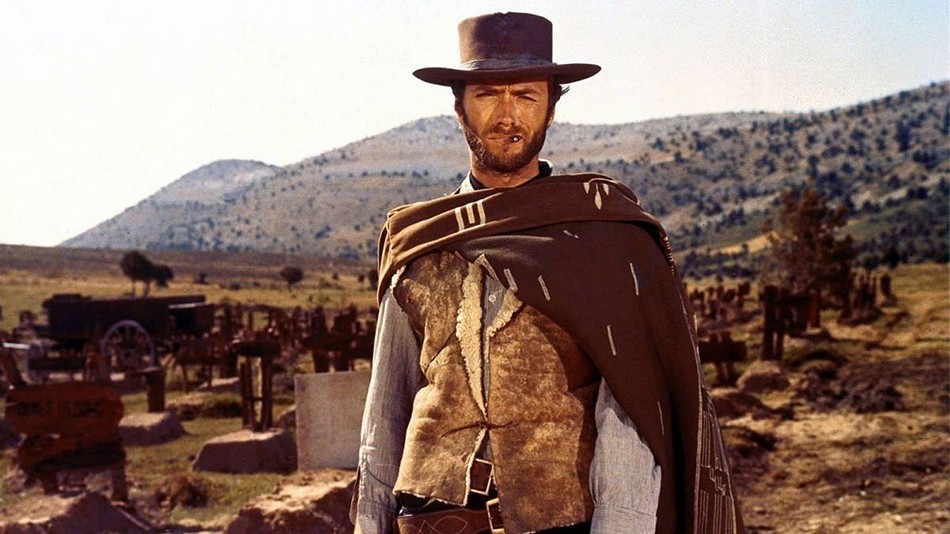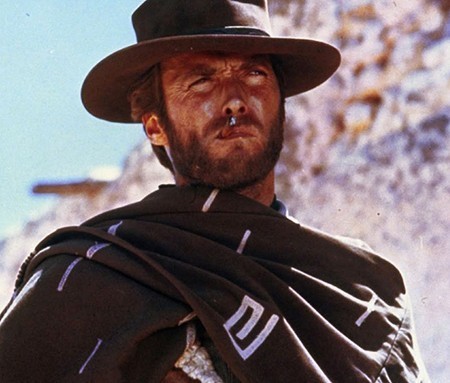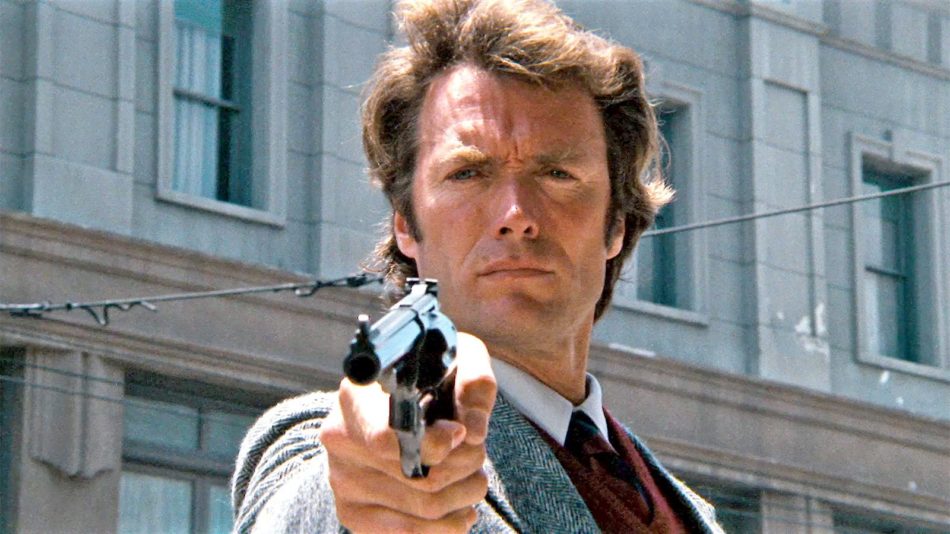How ‘Yojimbo’ and ‘A Fistful of Dollars’ shaped the modern action movie star

When Italian director Sergio Leone began production on what would become his Western epic, A Fistful of Dollars, little did he know that he would be setting the wheels in motion for what would become the blueprint for the modern day action hero. The story starts with Leone seeing Akira Kurosawa’s Samurai epic, Yojimbo for the first time. Captivated, Leone saw the story as the perfect way to reinvent the Western, a genre he enjoyed but felt had become stagnant since its heyday. With this in mind he began to piece together a script based on Yojimbo, resetting it scene by scene in 1800’s Mexico, even going as far as memorising bits of dialogue to place in his own script.
This would later become a bone of contention after the films success, resulting in a lawsuit from Kurosawa and the film actually being billed as a Yojimbo sequel in Japan, something Leone felt strongly about as he felt both his and Kurosawa’s movie owed a huge debt to the Italian play Servant of Two Masters. Despite this, the two directors would eventually settle out of court with Kurosawa receiving a lump sum from Leone and a small percentage of the movies worldwide profits, a sign that Leone perhaps did concede that his new found stardom was in part, thanks to Kurosawa, despite what he (presumably) saw as hypocrisy on the Japanese director’s part.
A Fistful of Dollars

Controversy aside, A Fistful of Dollars is far from being a hack job and is a magnificent movie in its own right (something that even Kurosawa would later admit), and with its vivid colours and now iconic score from Ennio Morricone is at times, barely recognisable from its black and white source material. This, however, didn’t make it any easier for Leone when it came to casting the person who would become The Man With No Name.
The main problem was that despite A Fistful of Dollars later being seen as the genesis of what would become known as the Spaghetti Western (or Macaroni Western in Japan), it was far from being the first Italian Western. In fact, the Italians had been making them since the days of silent movies, but were in just about every case seen as vastly inferior to their American counterparts. What also didn’t help was the fact that the script was translated directly from Italian to English which left much of the dialogue as stunted and at times, incomprehensible to a natural English speaker leading many of the American actors who received a copy to dismiss it instantly.
The Right Man for the Job

Among the who’s who of actors who turned down the role were stars Charles Bronson, Henry Fonda and James Coburn, all of which dismissed it as being terrible and all of which would perhaps tellingly work under Leone in future projects. Also approached was actor Richard Harrison. Although far from being a star name in America, Harrison had actually relocated to Italy in the early sixties to try his luck in European cinema.
He had caught on well there and was soon considered a box office attraction with one studio even going as far as giving fellow actor Bruno Piergentili the pseudonym Dan Harrison in attempt to play off the former’s name. Harrison would also turn down Leone, having just filmed Gunfight at Red Sands (coincidentally, the first Western to be scored by Morricone), an experience he hadn’t enjoyed but did in what he would later describe as his greatest contribution to cinema, agree to help the now desperate director find an actor to take up the role. His suggestion would be of course, Clint Eastwood.
Rawhide Roots

Having spent most of the fifties as a jobbing actor, picking up bit parts and character work in a range of productions Eastwood would get his big break in 1958, landing the part of Rowdy Yates in the television series Rawhide. In Rawhide he would become known for being a clean cut, ‘white hat’ character who in his own words ‘kissed old ladies and dogs and was kind to everybody’ a far cry from The Man With No Name. Eastwood saw A Fistful of Dollars as a chance to shed that image and perhaps help him towards the kind of parts he saw himself playing. Leone wasn’t initially convinced, but lightened up on the idea after drawing over a publicity photo of Eastwood, adding many of the elements which would make up the character in his sketch.
And so it was with very few other choices to play the role that Eastwood would sign on the dotted line and filming would begin during Eastwood’s annual break from Rawhide. Upon arriving in Italy, Eastwood would begin collaborating with Leone to construct The Man With No Name and gets credit for putting together the now iconic look of the character with many of the items including the hat and jeans, coming out of Eastwood’s own wardrobe as well as taking the unusual step to actually remove much of his dialogue to emphasise the mysterious nature of the character, something very few other actors would agree to, let alone suggest.
The Magnificent Stranger

Filming was quickly wrapped and Eastwood returned to America (and Rawhide) with very little fanfare, $15,000 richer, and a shade or two darker thanks to the Spanish sun. In fact, even after hearing the film was doing well in Europe he didn’t actually realise it was his film due to the fact that the title had been changed from The Magnificent Stranger to A Fistful of Dollars without his knowledge and it wouldn’t be until 1967 (three years after initial release and after wrapping the two follow up movies) that the movie would hit American cinemas. Although well received in Europe, all three movies were panned in America with much of the critique being aimed at Eastwood rather than the movie itself, which most agreed, looked beautiful.
So, how does such a maligned performance go from being seen as the pits to becoming the basis of so many action heroes? Well, like in so many cases, critical success doesn’t automatically transfer into box office dollars and vice versa and while the critics may have not liked The Man With No Name, the viewers certainly did as the film would go on to make over $14 million (over $100 million in current terms) at the box office worldwide.
The Rise of the Spaghetti Western

This is the sort of thing studios and producers take notice of – and while the filmmakers might be interested in critical success – what really talks is (like any industry) the money and in turn, what the consumer wants. It’s no coincidence that after the release of A Fistful of Dollars the Italian film industry went into overdrive when it came to producing Spaghetti Westerns and it’s even less of a coincidence that the majority of the lead characters were mysterious strangers. But what was it that made The Man With No Name different? After all, the Western had been littered with grizzled cowboys for decades and their popularity had been on a steady decline for years by this point, so what was the difference here?
Well, firstly, you have to look at those who were playing these roughneck heroes. The likes of John Wayne, James Stewart and Randolph Scott had been playing these characters from as far back as the twenties and thirties and were by this point well into middle age and were being increasingly seen as a running joke. The audience had seen them do it all and no longer had any investment in the characters they played and despite the insistence of the studios in the continual casting of them the viewing audience had began rejecting the Western for what were seen as more cutting edge movies. Where Eastwood differed was simple, he was a relatively fresh face, he was still young and to put it bluntly, he was just far more believable than they were at this stage in their careers. He was cool, and they just weren’t.
Calm, Cool and Collected

This new sense of coolness also had a lot to do with how Leone and Eastwood presented the character too. As I mentioned before, Eastwood purposely cut lines from his script and delivered those that remained with what would become his trademark understated calmness adding a sense of intrigue that someone like John Wayne couldn’t deliver. The Man With No Name also had vastly different motivations to those of the traditional Hollywood Western as well. Whereas they were presented as knights in shining spurs, saving damsels from distress and just being all round chivalrous good guys, Eastwood’s character was completely different.
He held no aspirations to be a knight, he was an anti-hero who was out for number one and didn’t even attempt to hide this fact which gave him an edge that would appeal to a fresh audience. While many watching couldn’t relate to being the cleaner than clean hero, many could aspire to be the cool, stylish man of mystery that Eastwood projected and almost instantly the old guard were banished to the history books as this new type of hero was ushered in.
From Samurai to Cowboy

The beauty of it too was that this character could be adapted to be used in just about any scenario, just as Leone had done by taking Toshiro Mifune’s samurai and making him a cowboy, he could now just as easily be a policeman, army officer or just an every man on the street, it really didn’t matter. Not only did this open doors for actors to add some variety into their resumes but also opened a world of possibilities for directors and scriptwriters when it came to writing new concepts as well.
Instantly, the days of someone like Eastwood being limited to playing variations of a cowboy were gone and he could take his brand of anti-hero into any field and make it work, something he obviously did with great success and has continued to do so in the decades that followed. And many followed too, a lot of the bigger stars of the fifties and sixties found themselves obsolete as a new grittier generation of actors began to take leading roles as Hollywood ushered in arguably its most creative period ever in the seventies. The age of the clean cut good guy was over and everyone could see it.
The Archetypical Action Star

From this point on just about every action star owes a debt to The Man With No Name, they could not only show their flaws, they could revel in them with cutting humour and unadulterated cynicism. Be it Charles Bronson’s Paul Kersey in Death Wish, Bruce Willis’ John McClane in Die Hard or even the likes of Vin Diesel’s Dominic Toretto in The Fast and the Furious, every single one of them has chinks in their armour and we just loved them more for it.
The Spaghetti Western may have imploded under its own weight decades ago, but its legacy lives on through The Man With No Name and his many cinematic children and will continue to do so for many generations to come so much so that it’s hard to imagine what the Hollywood landscape would look like without him.
Article by Will Carter – B-Movie obsessive and record shop employee living in Yorkshire, England. Contributor to Retro Cool and The Gravel Crew and long suffering car enthusiast. Genuinely believes there’s never been a better contribution to movie history than Bloodsport. Let us know what you think in the comments or on our Facebook page!









